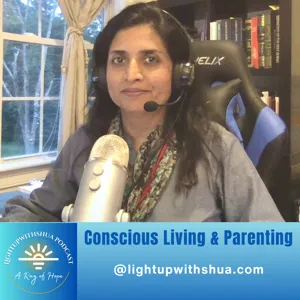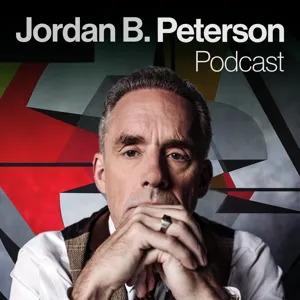Podcast Summary
Earth's Hazards: From Small Meteors to Catastrophic Asteroid Impacts: Understanding Earth's place in the universe is crucial to mitigating the risks of asteroid impacts and preventing catastrophic consequences, such as climate change and mass extinctions.
Earth, despite being our home, is not without its hazards. While smaller meteors burn up harmlessly in the atmosphere every day, larger asteroid impacts can lead to catastrophic consequences, including climate change and mass extinctions. The extinction of the dinosaurs serves as a reminder of the power of these cosmic events. Bill Nye, the science guy, emphasized the importance of understanding our planet's place in the universe to help us delay our eventual extinction. As we continue our discussion on StarTalk, we'll dive deeper into the ways Earth wants to kill us and what we can do to mitigate these risks. Stay tuned for more insights from experts in the field.
The Earth has caused most major extinctions: Paleontologist Peter Ward argues that natural phenomena like climate change cause most major extinctions, not asteroid impacts. The Earth's ability to sustain life and the resilience of different species vary greatly.
While asteroid impacts are a real threat to life on Earth, they are not the only cause of mass extinctions. According to paleontologist Peter Ward, the Earth itself has been responsible for the majority of major extinction events throughout history. These events, caused by natural phenomena such as climate change, have led to the extinction of a significant portion of the planet's species. Despite the fear-mongering of asteroid impacts in popular culture, Ward argues that we should be more concerned about the Earth's ability to sustain life in the face of its own natural disasters. He also emphasizes that not all species are created equal when it comes to the ability to bounce back from such events. The most severe extinction events have led to the extinction of a large percentage of all species, leaving only the hardiest survivors. So, while we may worry about asteroid impacts, we should also be mindful of the Earth's own capacity for destruction and the role it plays in shaping the planet's biosphere.
The Gaia Hypothesis: Life Improves Earth's Conditions for Its Own Existence: The Gaia Hypothesis suggests that life and Earth are interconnected, making it challenging to find a habitable planet without life already present. Focusing on preserving and improving Earth, and potentially creating a backup planet, may be more practical than terraforming other planets.
The Gaia hypothesis suggests that life and Earth are interconnected in a way that life improves the conditions for its own existence. This was inspired by the Permian-Triassic extinction event, which killed 96% of marine species and 70% of land species, and for which there is no known asteroid record. The hypothesis implies that life creates conditions suitable for itself, making it difficult to find a planet with conditions suitable for life without it already being present. While we may dream of terraforming Mars into an Earth-like planet, it would take millions of years to accomplish. Instead, focusing on preserving and improving Earth, and potentially creating a backup planet, may be a more practical approach.
Earth as a Deadly Force: Geologist Peter Ward challenges Gaia hypothesis, emphasizing Earth's potential harm to life and importance of recognizing warning signs
According to geologist Peter Ward, Earth is not a protective mother as suggested by the Gaia hypothesis, but rather a deadly force that could potentially harm its inhabitants. This perspective challenges the common belief that Earth acts in the best interest of life and instead emphasizes the need for humans to be aware of the planet's potential threats. Using the mythological analogy of Medea and Jason, Ward suggests that Earth, as the mother figure, may react with wrath when ignored or disrespected, leading to devastating consequences. This perspective encourages a greater appreciation for the importance of understanding and addressing Earth's warning signs to prevent potential harm.
Life and Earth are in a state of disequilibrium according to Peter Ward's Medea Hypothesis: The Medea Hypothesis suggests that life and Earth are not in harmony but in a state of constant disequilibrium, leading to extinction for most species through self-inflicted disruptions and overproduction
According to Peter Ward's "Medea Hypothesis," Earth and life on it are not in harmony, but rather in a state of constant disequilibrium. This hypothesis suggests that life, including Earth, behaves in a way that is hostile to itself, leading to extinction for most species. One example given was the potential impact of global warming on ocean currents and the oxygen supply for creatures living at the bottom of the ocean. This disruption could lead to the release of hydrogen sulfide, resulting in a deadly and unpleasant environment. Additionally, Ward argues that life reproduces and evolves to the point of overwhelming its system, leading to its own demise. This perspective challenges the common notion of Earth as a loving and caring mother nature. Instead, it paints a picture of a universe where life, including stars, crystals, and organisms, follows the principle of producing more than the environment can sustain, resulting in a constant cycle of birth, growth, and extinction.
Disrupting Nature's Balance Can Lead to Harmful Consequences: Interfering with nature can have unintended consequences, including the emergence of super bacteria and ecosystem imbalances leading to pest infestations.
Nature maintains a delicate balance, and disrupting that balance can lead to unintended consequences, some of which could be harmful. This was discussed in the context of algae blooms, like red tide, and the potential risks of interfering with their ecosystems. The use of antibacterial soap was also brought up as an example of how attempting to control one aspect of nature can lead to the emergence of super bacteria. The speaker shared personal experiences of imbalances in nature, such as locusts, caterpillars, and stink bugs, in their summer home in the country. These imbalances were not necessarily a result of one species killing another, but rather each one taking over in turn. The overall message is that nature is complex and dynamic, and interfering with it can have unforeseen consequences.
Unexpected threats to our planet: Global warming can lead to oxygen depletion in oceans, allowing harmful bacteria to thrive and produce deadly gases, and mass insect infestations can disrupt human life.
Nature is more out of balance than we realize, and there are more threats to our planet than just global warming. While we are aware of the negative effects of carbon dioxide emissions and climate shift, there are other potential disasters that could arise. For instance, if we remove all oxygen from the ocean due to global warming, bacteria that produce hydrogen sulfide could thrive, leading to a deadly gas that could harm or even kill humans. Additionally, the ladybug infestations in New York City, while not deadly, serve as a reminder of the en masse arrival of creatures that can disrupt human life. It's essential to be aware of these threats and take steps to mitigate them.
The danger of hydrogen sulfide for life on Earth: Human-induced carbon emissions could lead to a deadly hydrogen sulfide event, threatening ocean life and essential currents, potentially causing mass extinctions and a hotter, less habitable planet.
Hydrogen sulfide, a gas produced in anaerobic environments, has the potential to cause mass extinctions and even lead to the end of life on Earth, as it has done multiple times throughout history. Our ability to detect the smell of hydrogen sulfide before it reaches lethal concentrations is a result of millions of years of mammalian evolution. However, with the current trend of increasing carbon dioxide levels in the atmosphere due to human activities, we are potentially setting the stage for another deadly hydrogen sulfide event. This could result in the death of ocean life and the loss of essential ocean currents and winds, leading to a hotter, less habitable planet. It is crucial that we take action to reduce our carbon emissions and prevent another mass extinction event.
Exploring the complexities of Earth's environment: Discovering unexpected benefits from Earth's harmful elements could lead to innovative solutions for mitigating climate change and preserving our planet.
The Earth is undergoing significant changes, and if we continue on our current path, we could face catastrophic consequences such as rising sea levels and the takeover of harmful bacteria in the oceans. However, there may be potential solutions, such as geoengineering projects and terraforming, which could help mitigate the damage. For instance, hydrogen sulfide, a gas often associated with a foul smell and danger, has been found to have positive applications, such as inducing suspended animation in mice and inducing hypothermia in rats. These discoveries highlight the complex nature of the Earth's environment and the potential for scientific advancements to address the challenges we face. Ultimately, it's crucial that we continue to research and explore ways to protect and preserve our planet.
Unrealistic solution: Relying on returning to a natural state: Find sustainable energy sources and create energy-efficient structures to reduce carbon emissions and mitigate environmental impacts.
Relying on the idea that returning to a natural state will solve our environmental issues is an unrealistic solution given the current global population and civilization. Instead, finding sustainable energy sources, such as nuclear power and hydrogen fuel, and creating energy-efficient structures are more practical ways to reduce carbon emissions and mitigate the negative impacts on the environment. It's essential that we all take responsibility and make collective efforts towards a greener future, as we're all in this "chemistry experiment" called Earth together.




